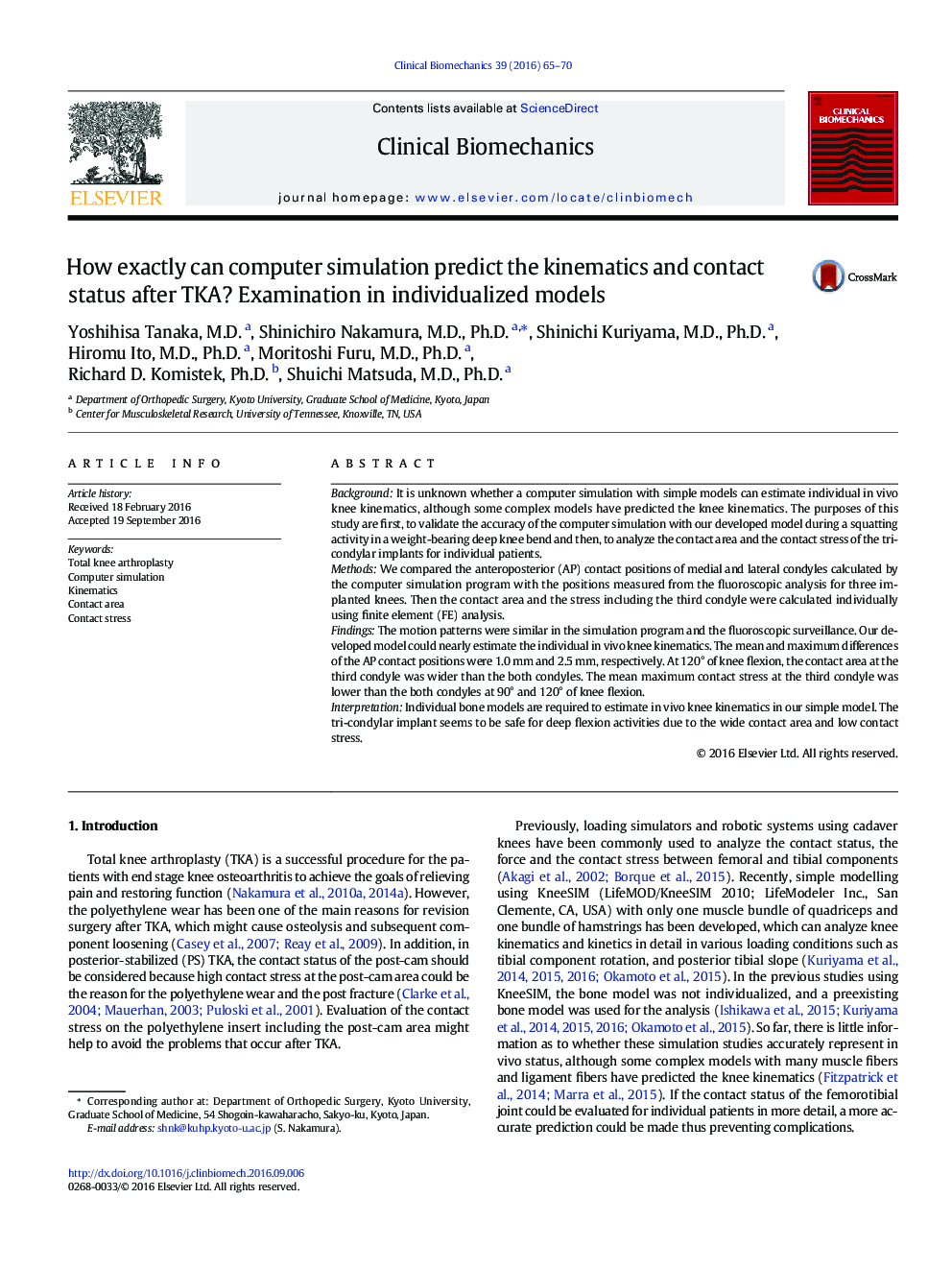| کد مقاله | کد نشریه | سال انتشار | مقاله انگلیسی | نسخه تمام متن |
|---|---|---|---|---|
| 6204574 | 1603739 | 2016 | 6 صفحه PDF | دانلود رایگان |

- The purpose was to analyze the accuracy of the simulation and the contact status.
- Contact positions were compared between the simulation and the fluoroscopic analysis.
- The contact area and stress were calculated using finite element analysis.
- The computer simulation program can represent in vivo knee kinematics.
- The tri-condylar implant has wide contact area and low contact stress.
BackgroundIt is unknown whether a computer simulation with simple models can estimate individual in vivo knee kinematics, although some complex models have predicted the knee kinematics. The purposes of this study are first, to validate the accuracy of the computer simulation with our developed model during a squatting activity in a weight-bearing deep knee bend and then, to analyze the contact area and the contact stress of the tri-condylar implants for individual patients.MethodsWe compared the anteroposterior (AP) contact positions of medial and lateral condyles calculated by the computer simulation program with the positions measured from the fluoroscopic analysis for three implanted knees. Then the contact area and the stress including the third condyle were calculated individually using finite element (FE) analysis.FindingsThe motion patterns were similar in the simulation program and the fluoroscopic surveillance. Our developed model could nearly estimate the individual in vivo knee kinematics. The mean and maximum differences of the AP contact positions were 1.0 mm and 2.5 mm, respectively. At 120° of knee flexion, the contact area at the third condyle was wider than the both condyles. The mean maximum contact stress at the third condyle was lower than the both condyles at 90° and 120° of knee flexion.InterpretationIndividual bone models are required to estimate in vivo knee kinematics in our simple model. The tri-condylar implant seems to be safe for deep flexion activities due to the wide contact area and low contact stress.
Journal: Clinical Biomechanics - Volume 39, November 2016, Pages 65-70